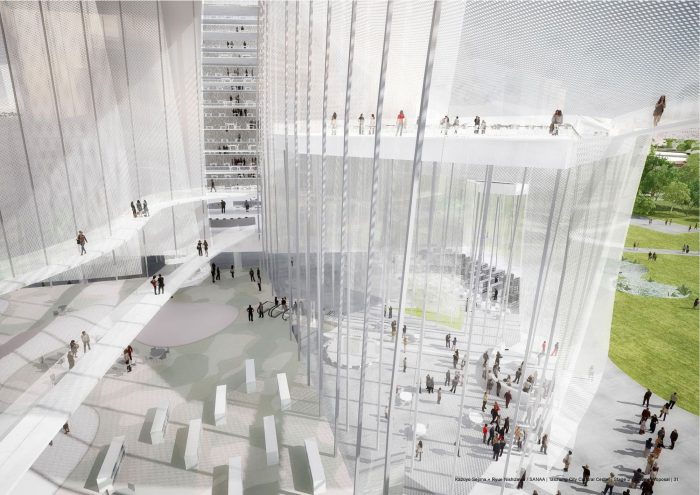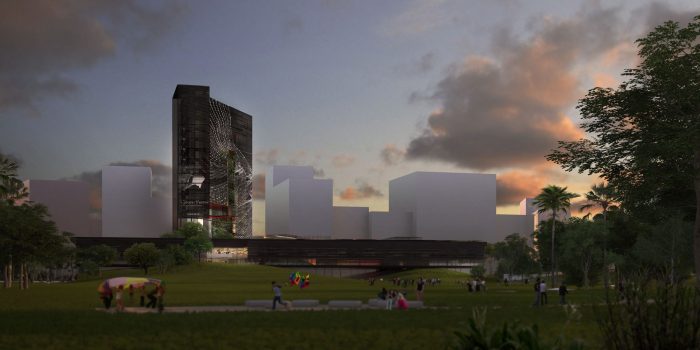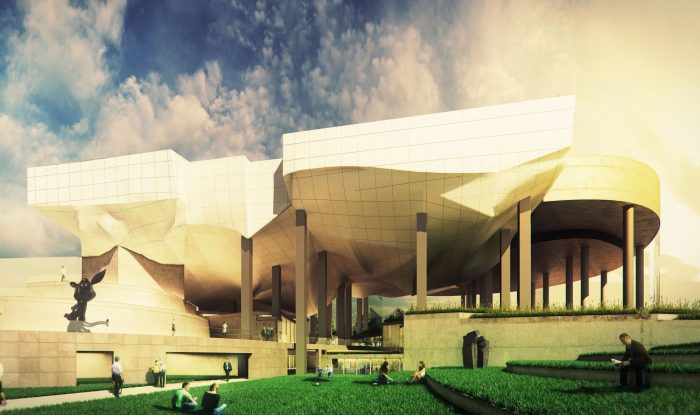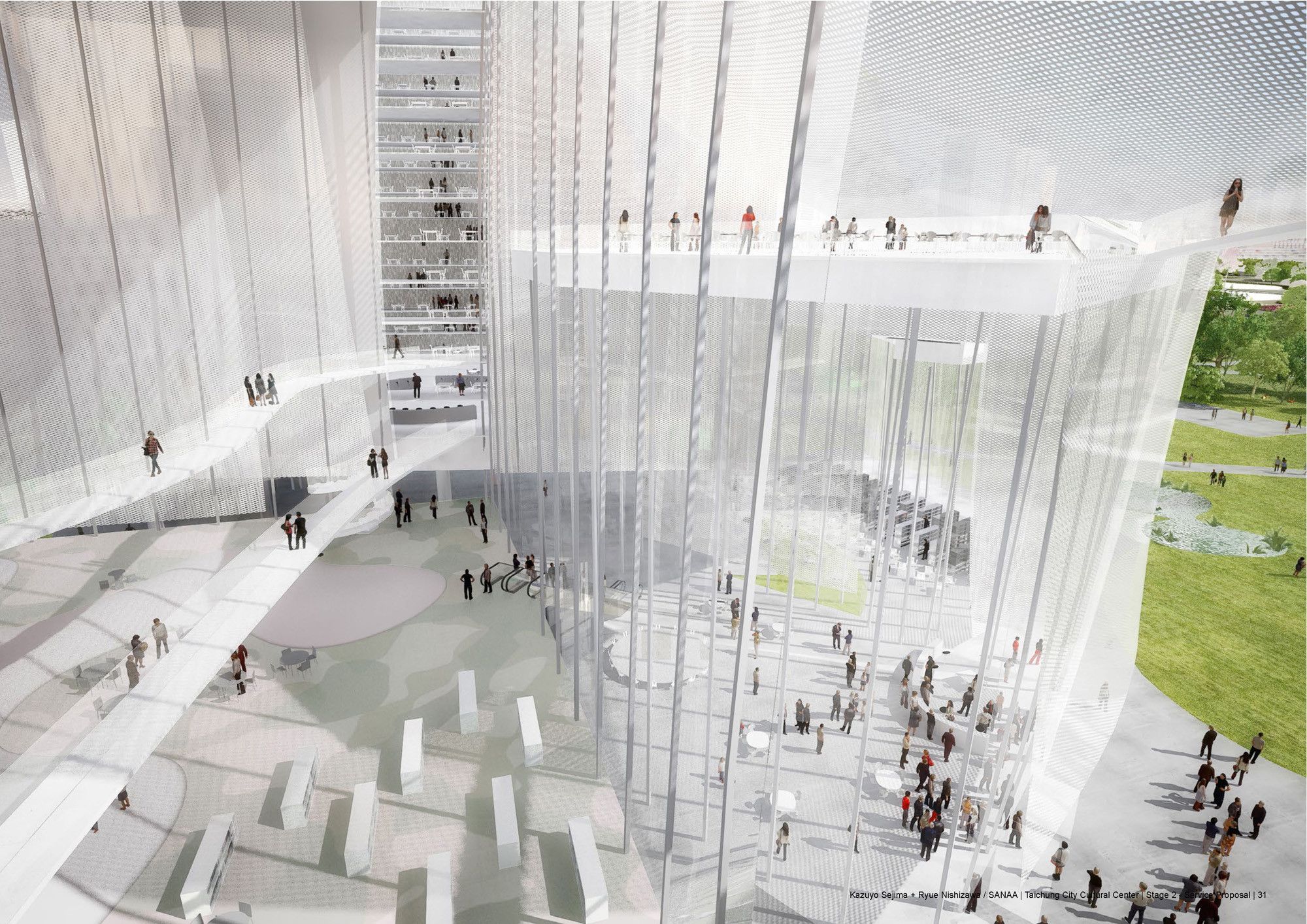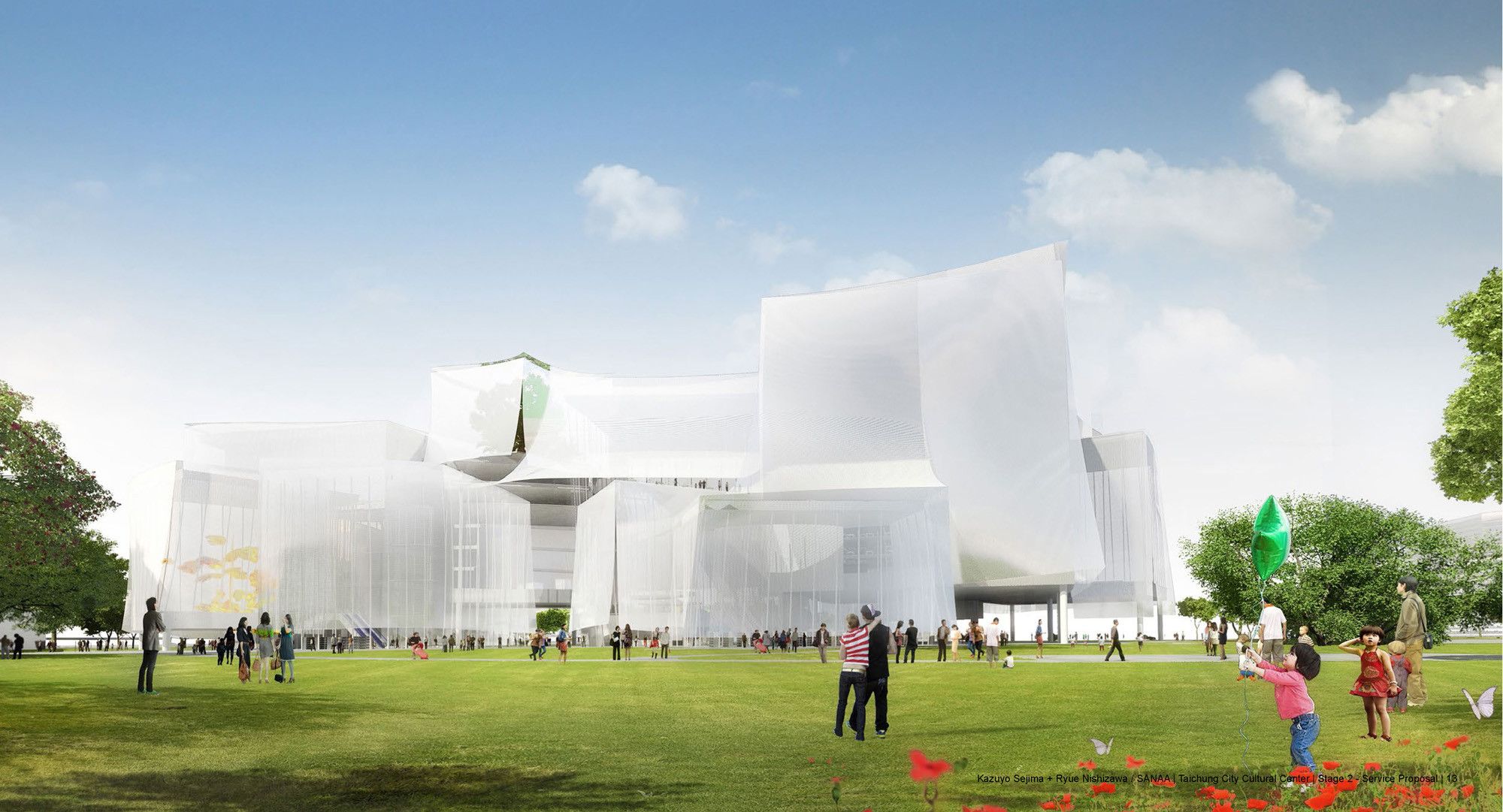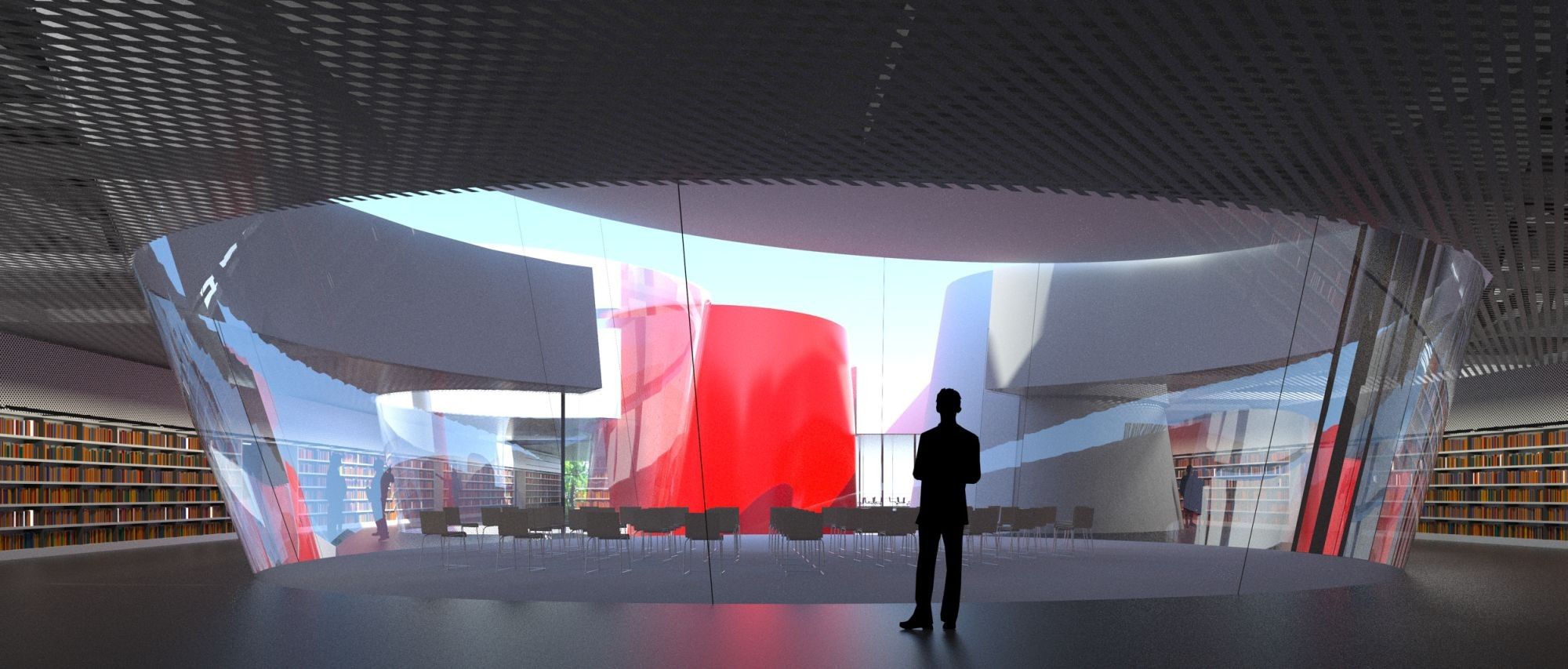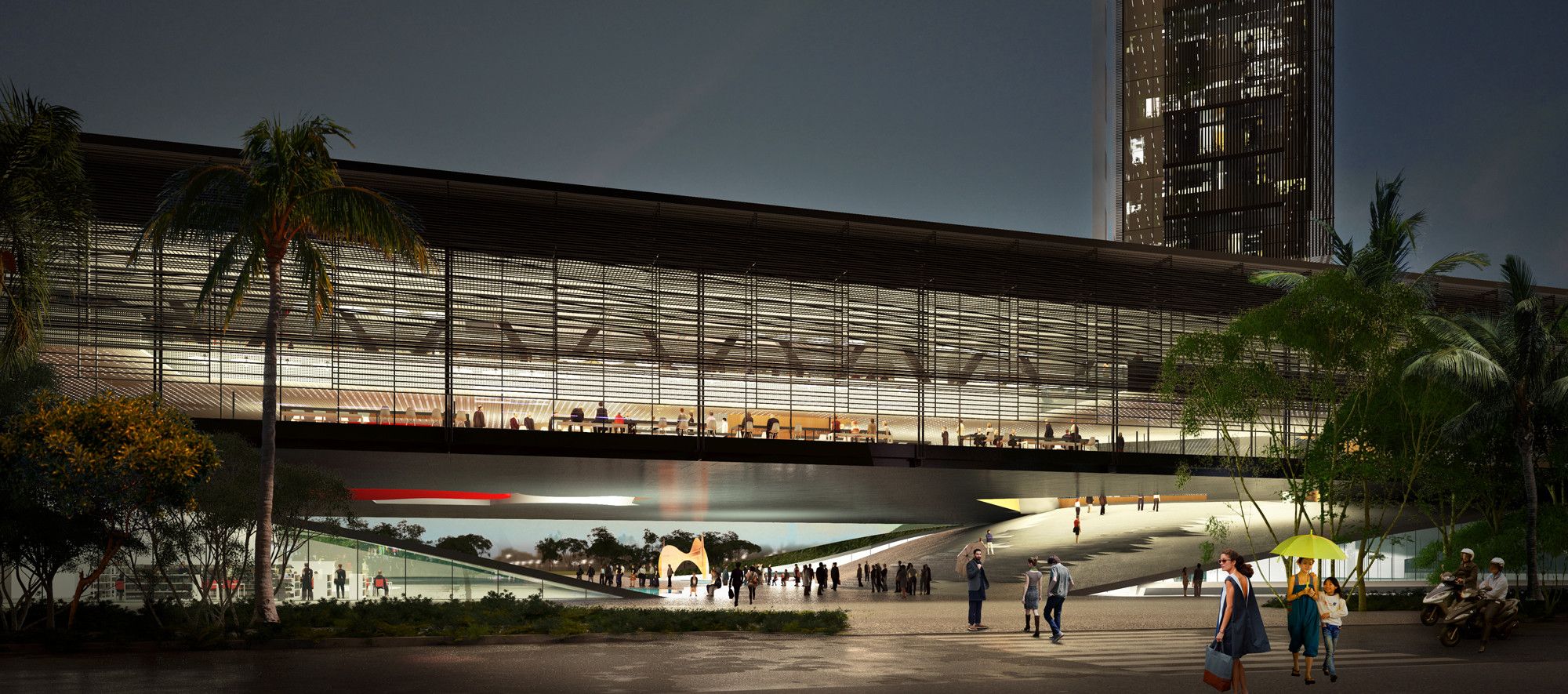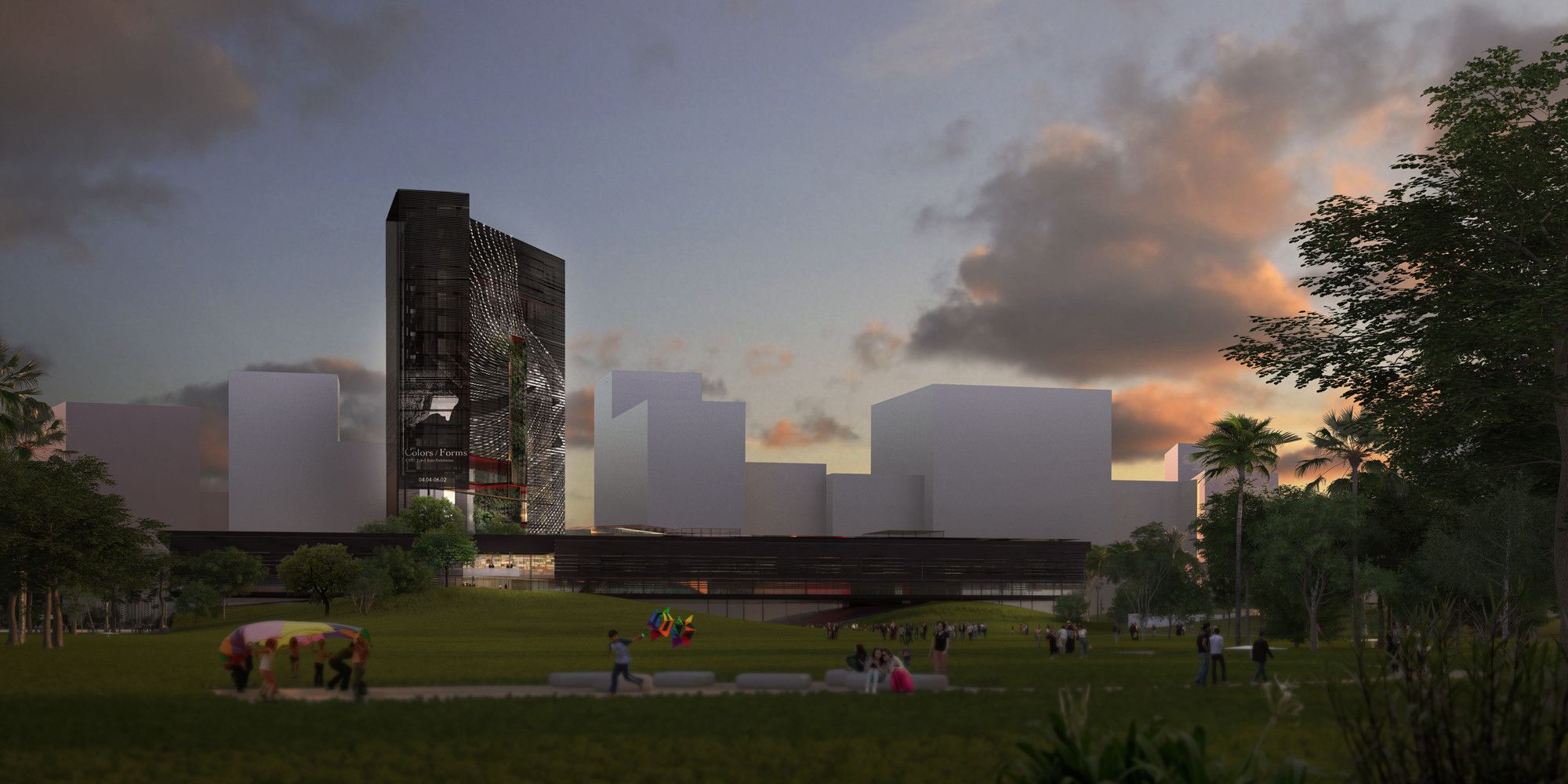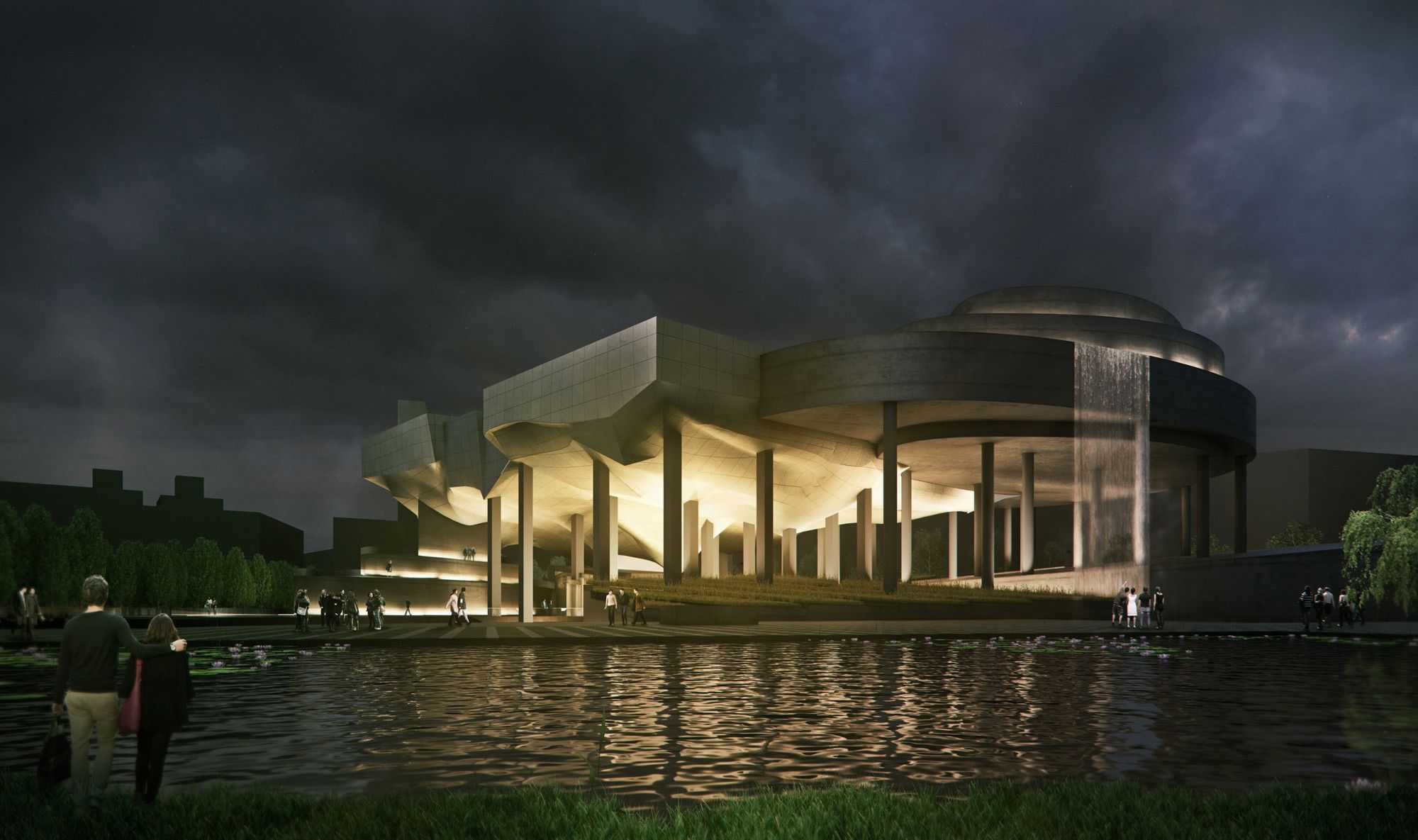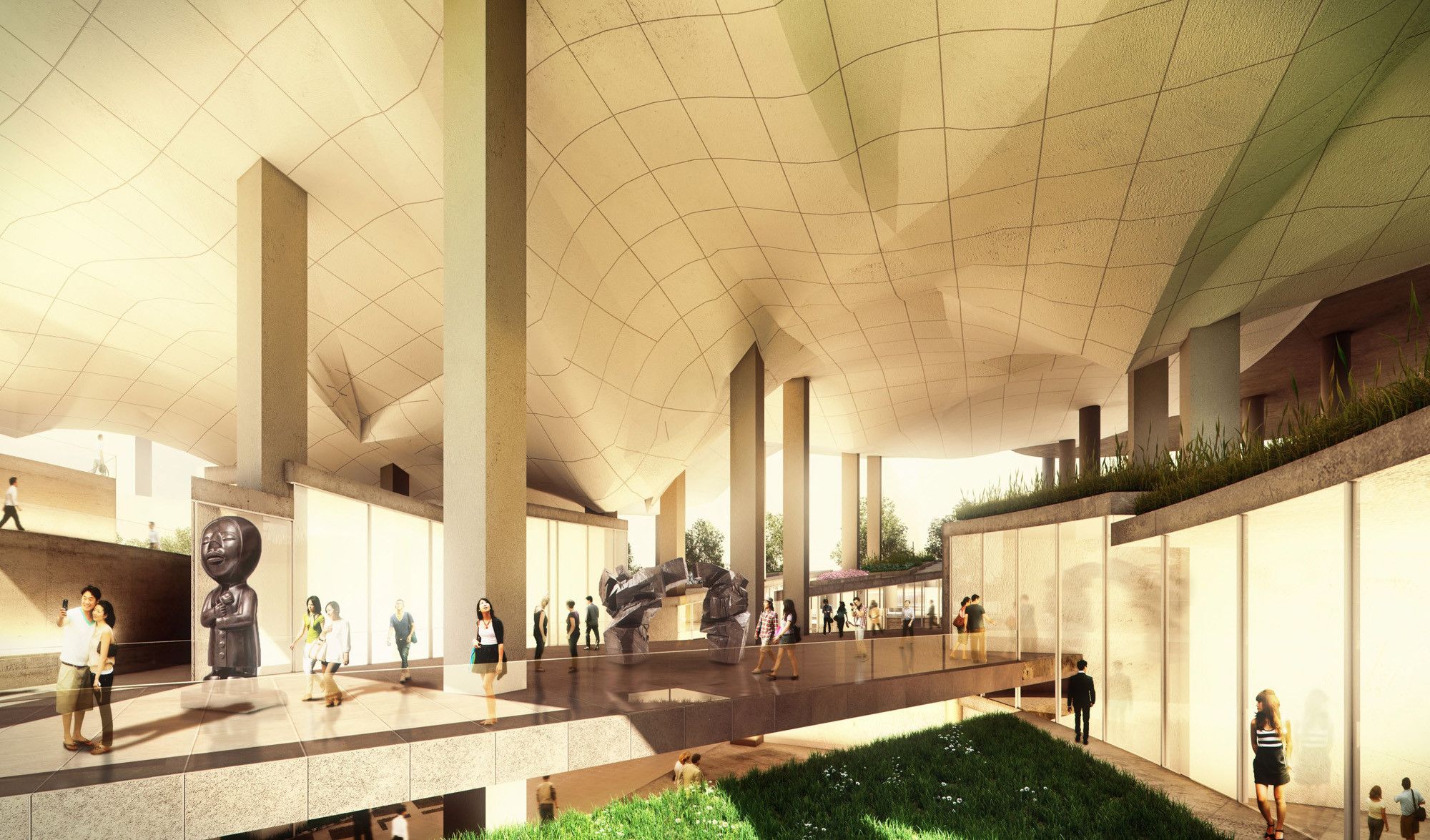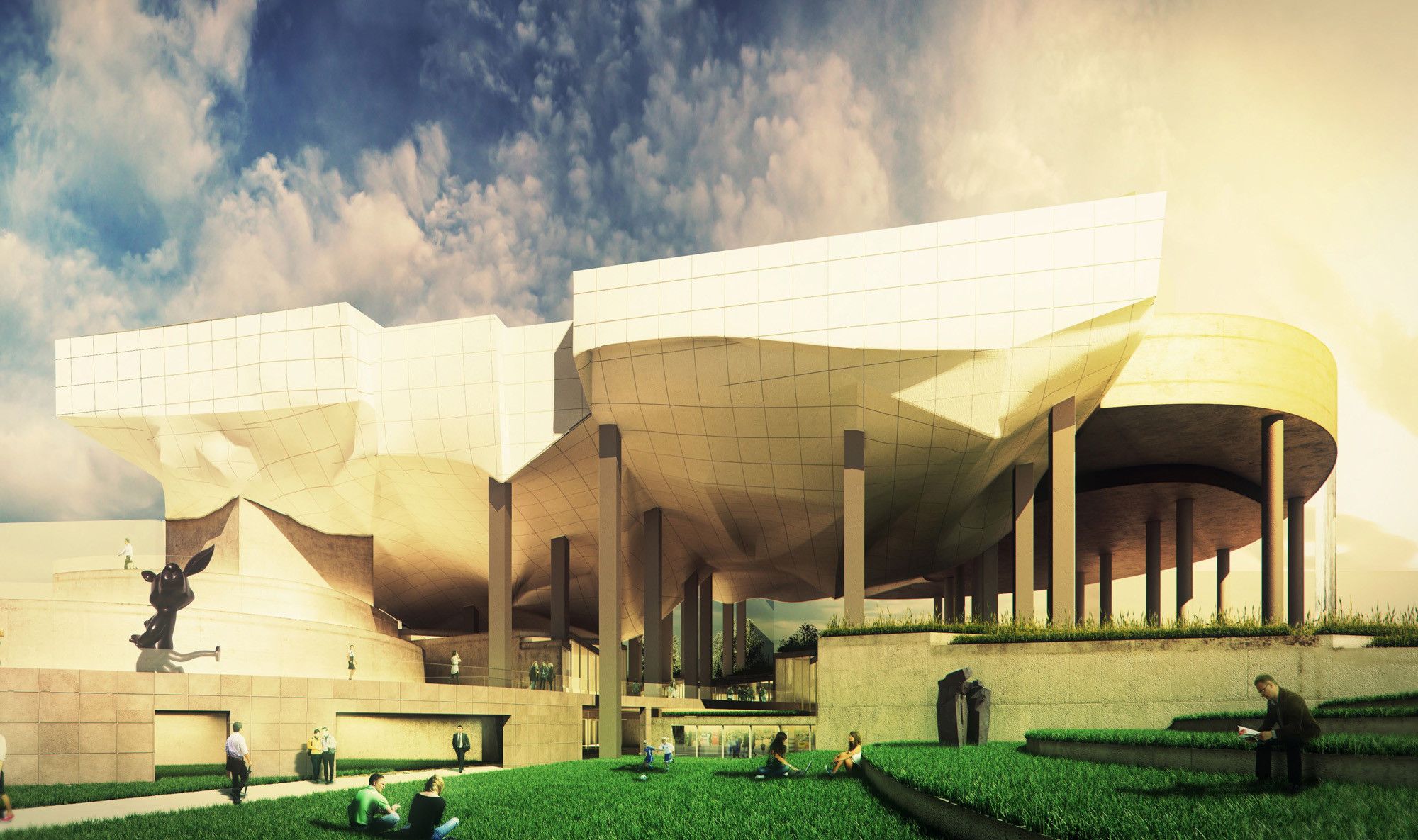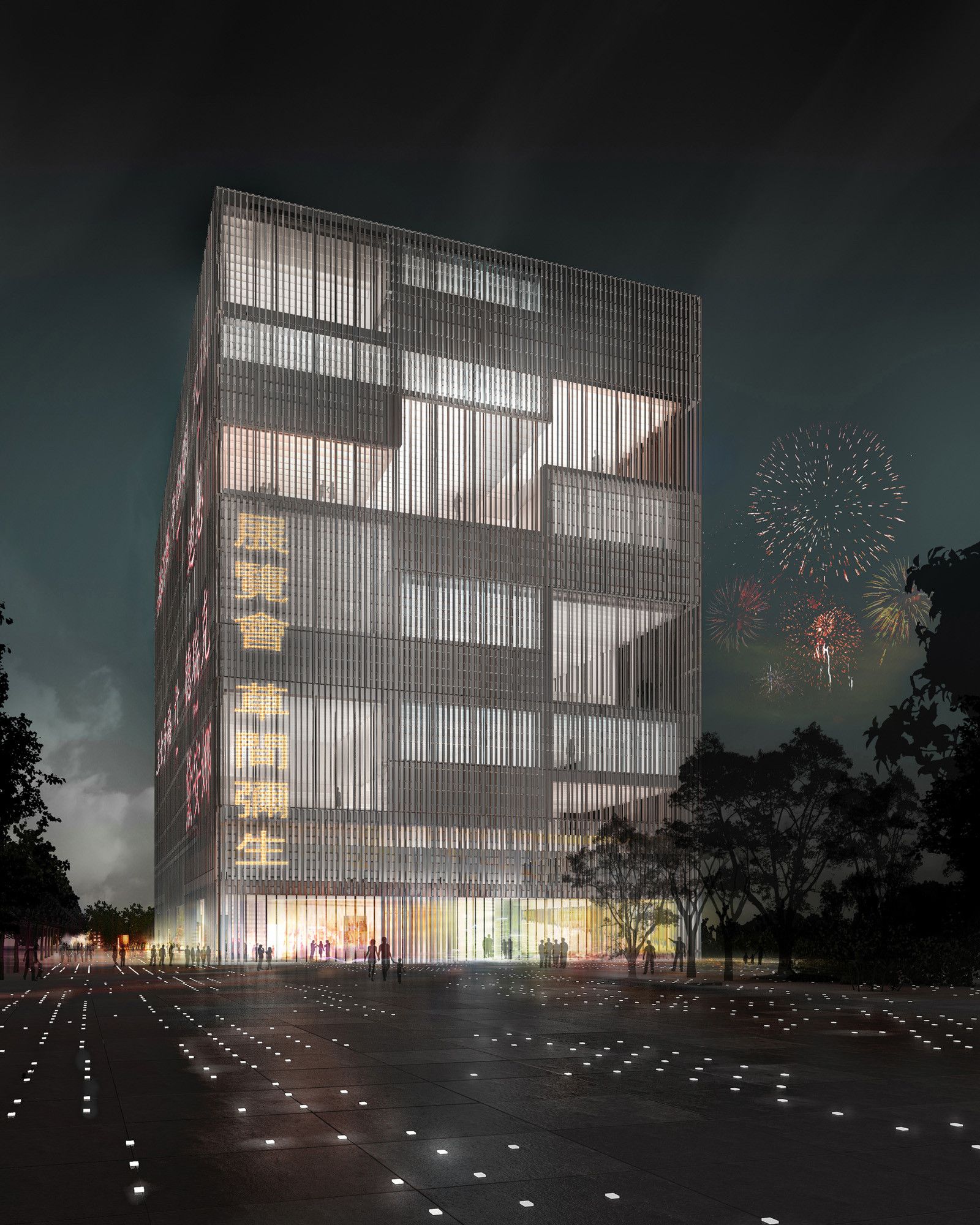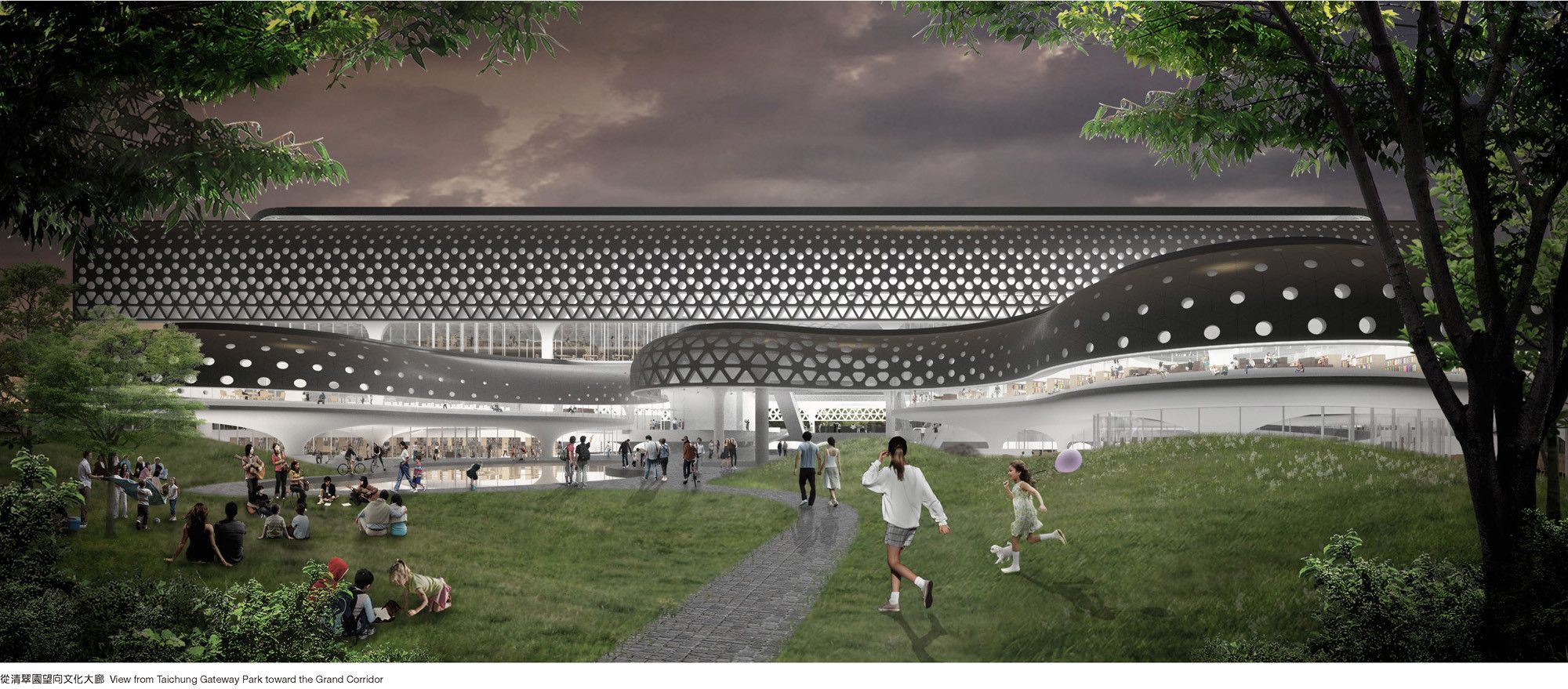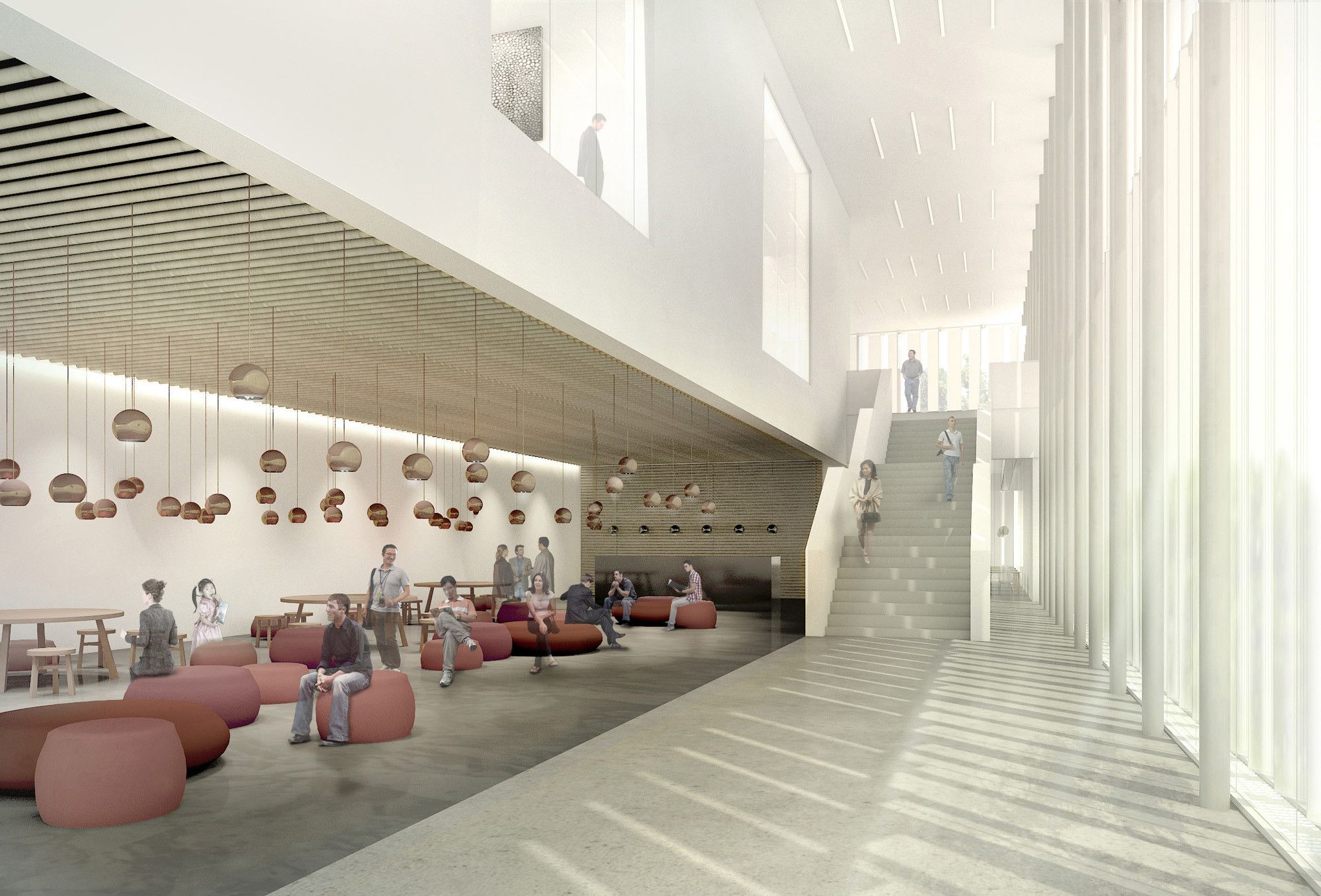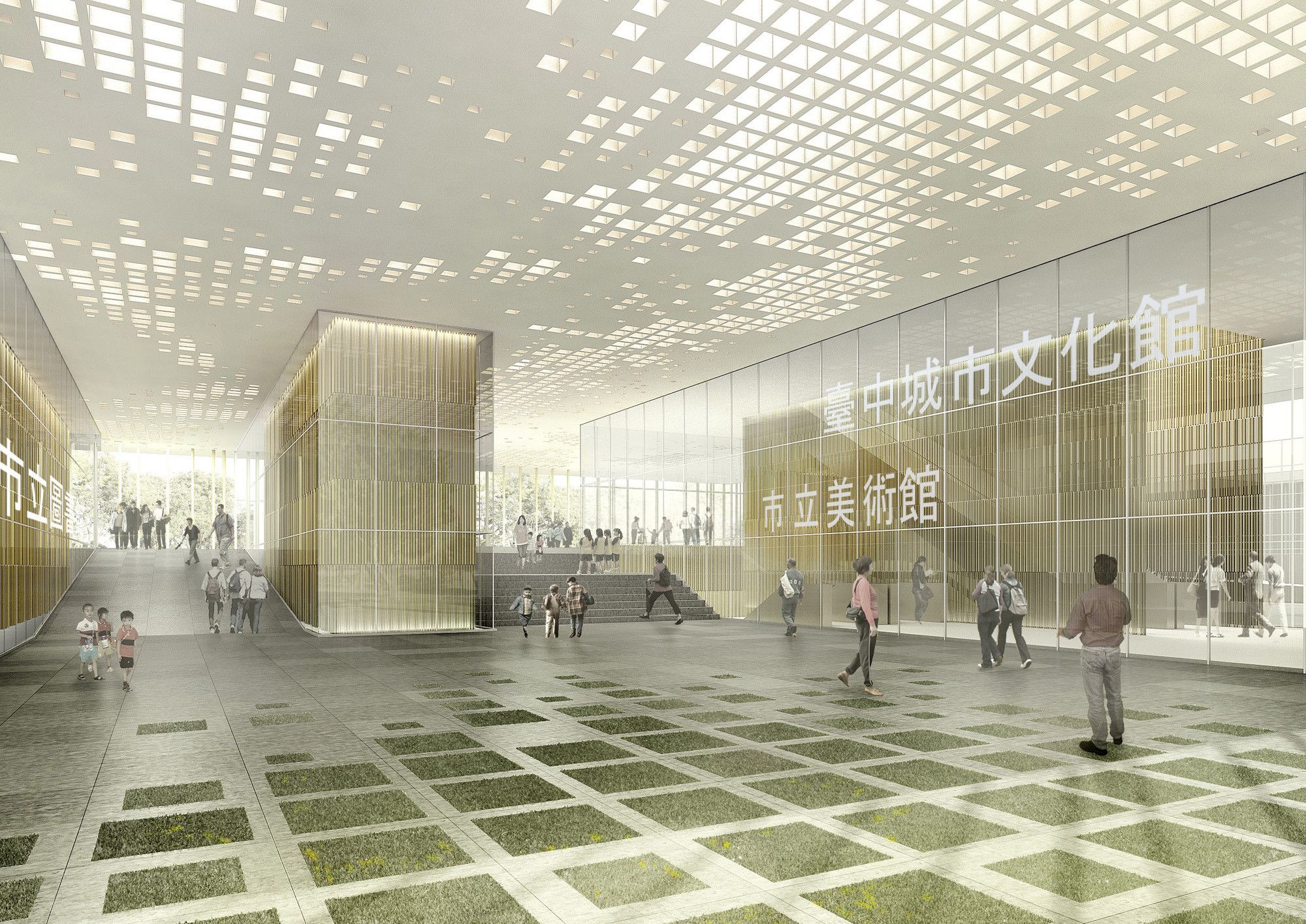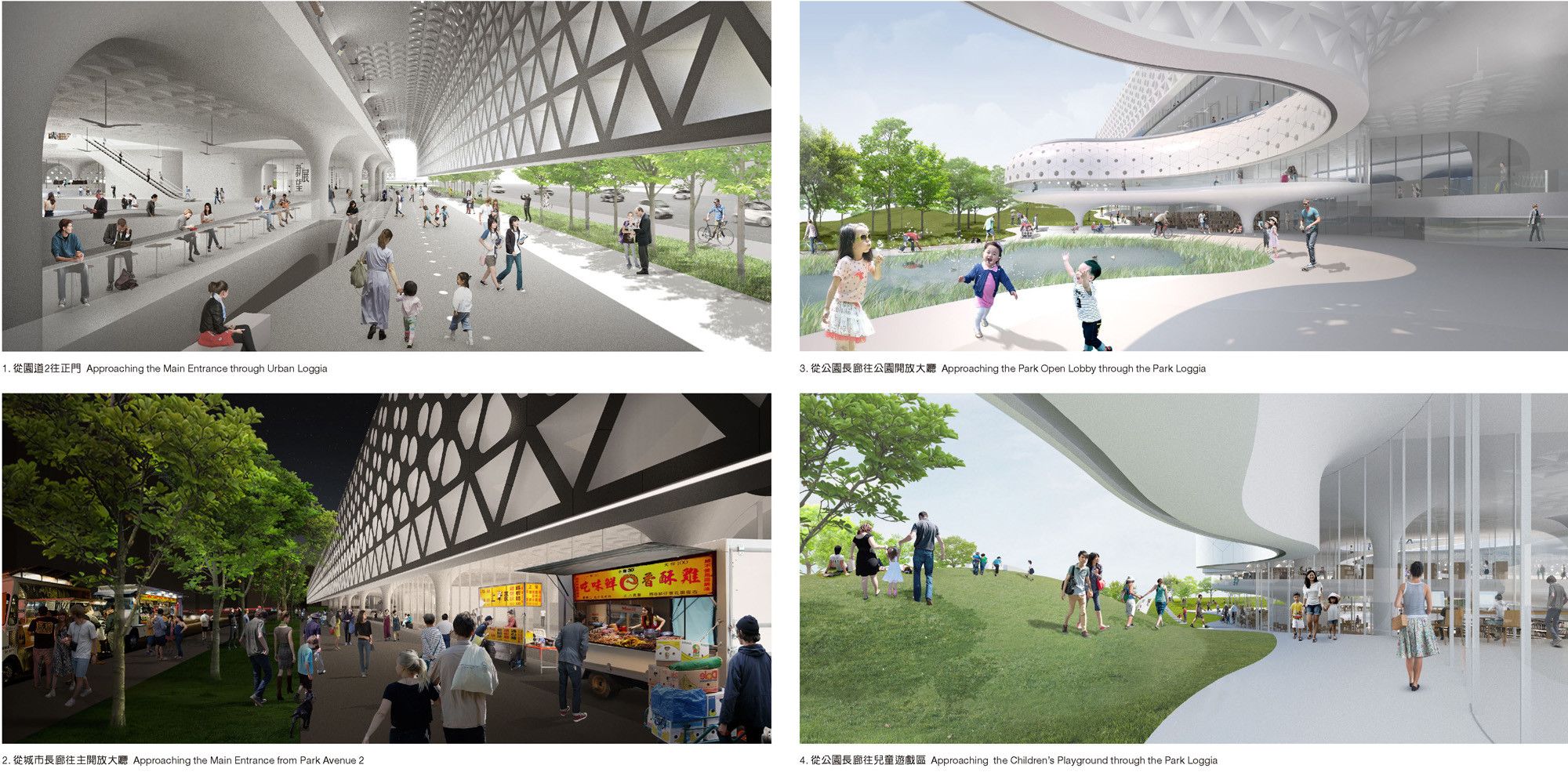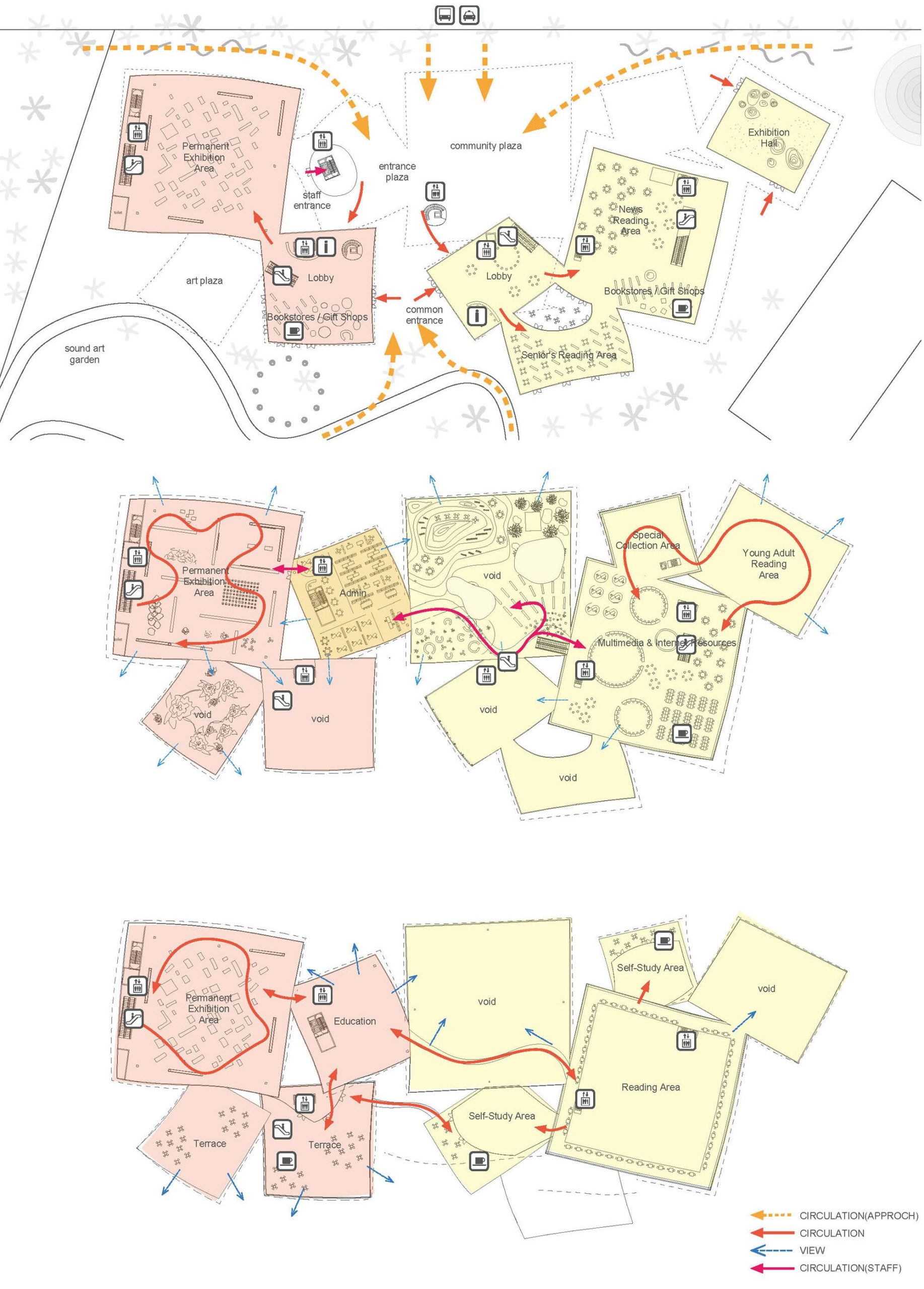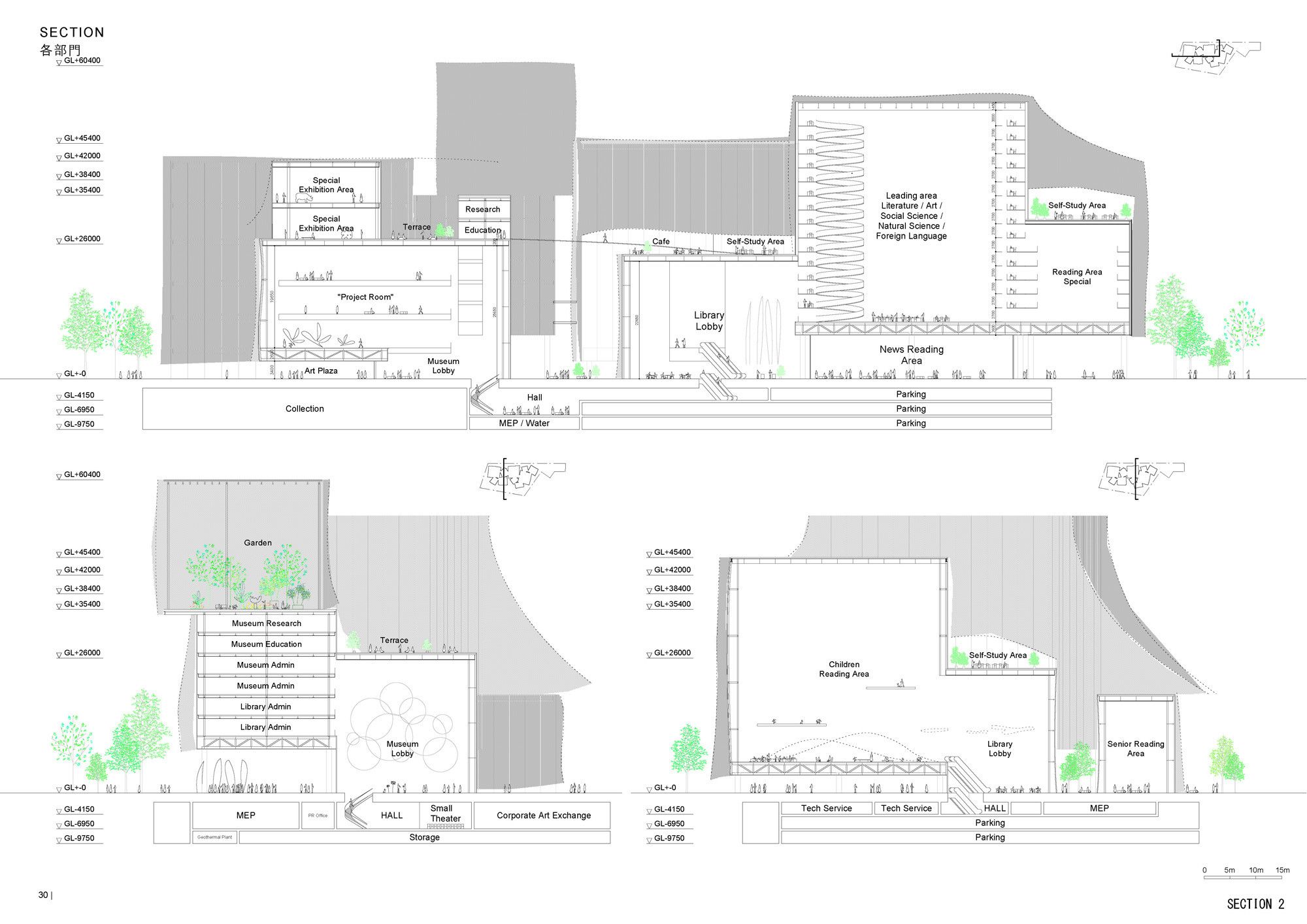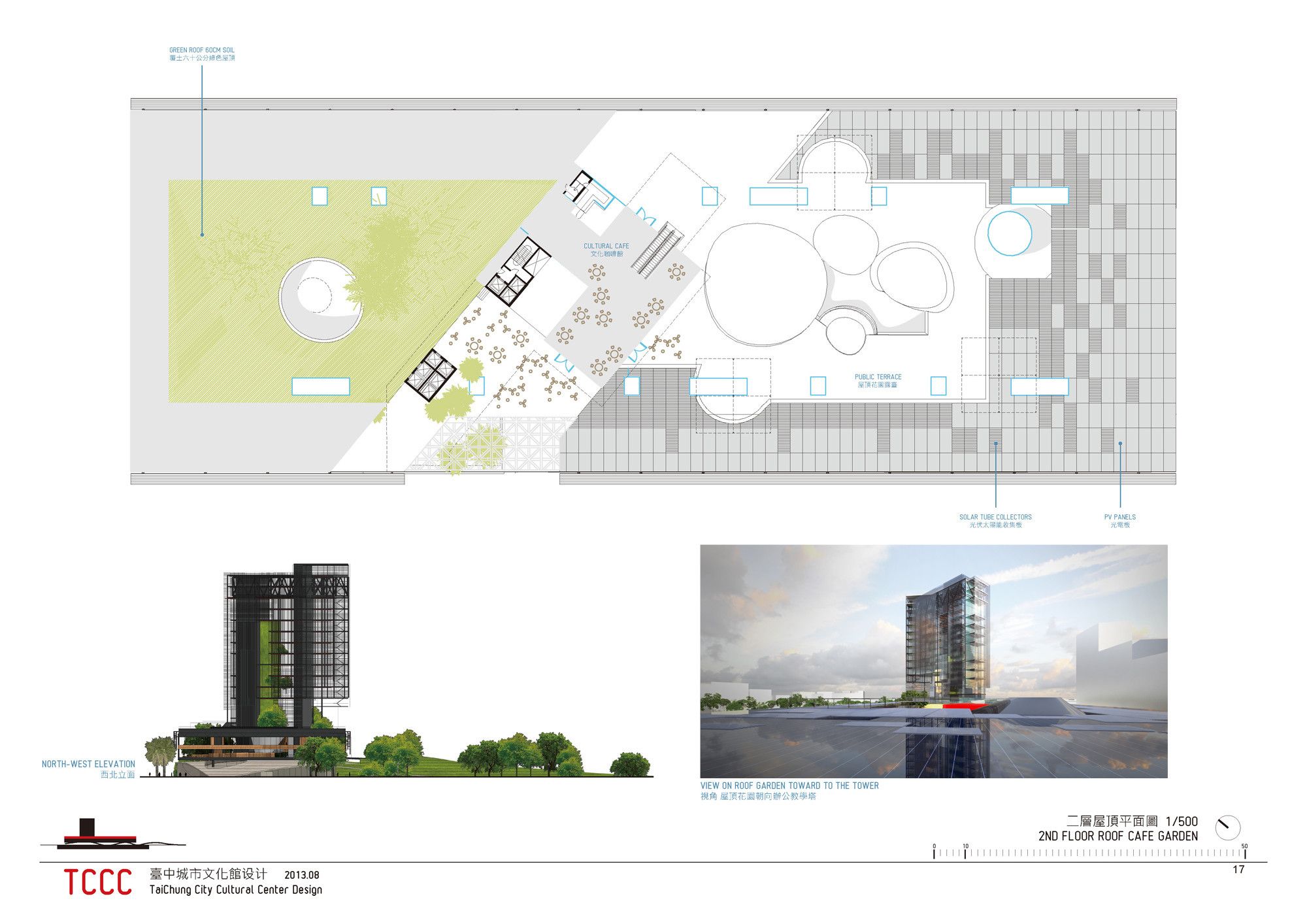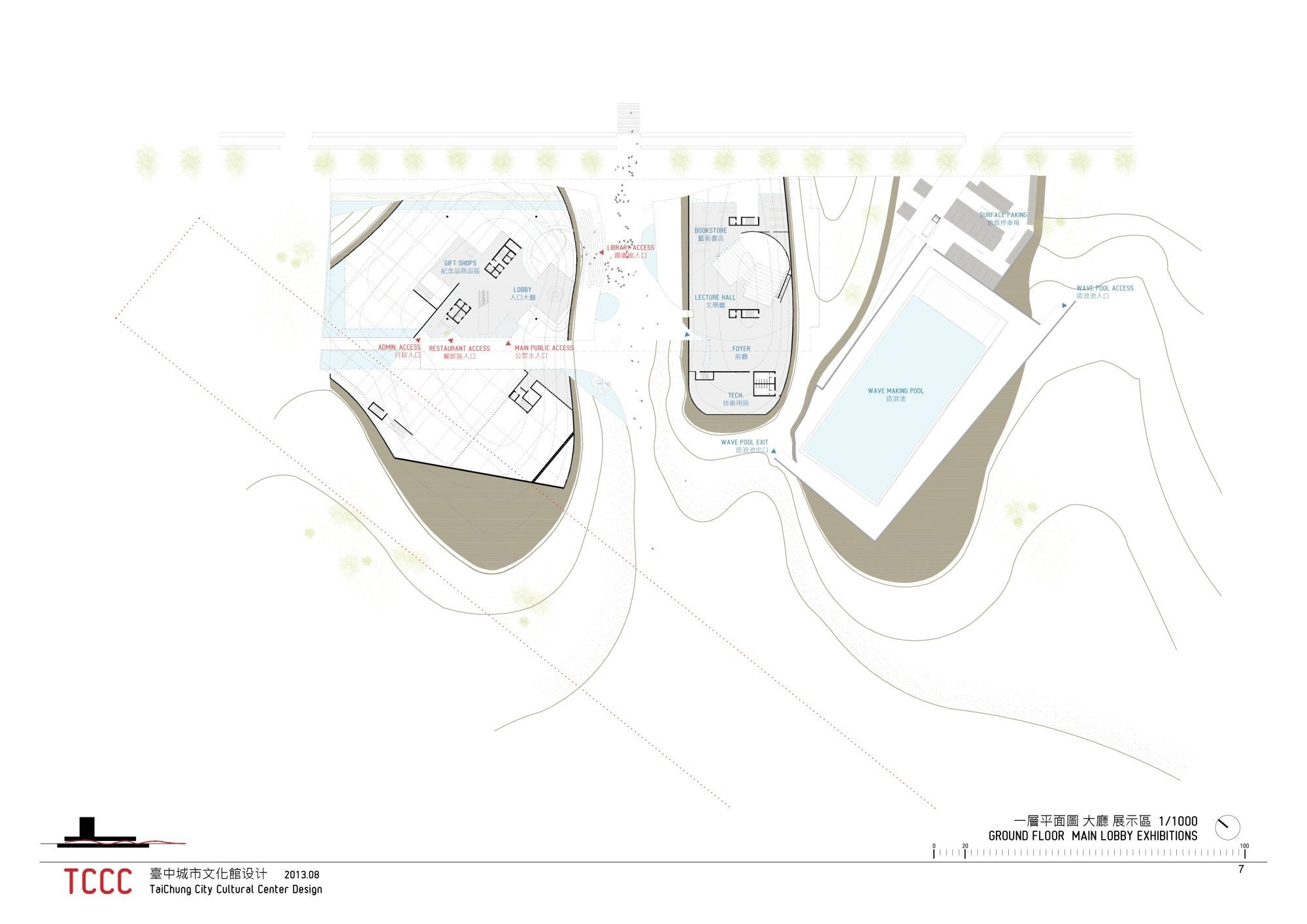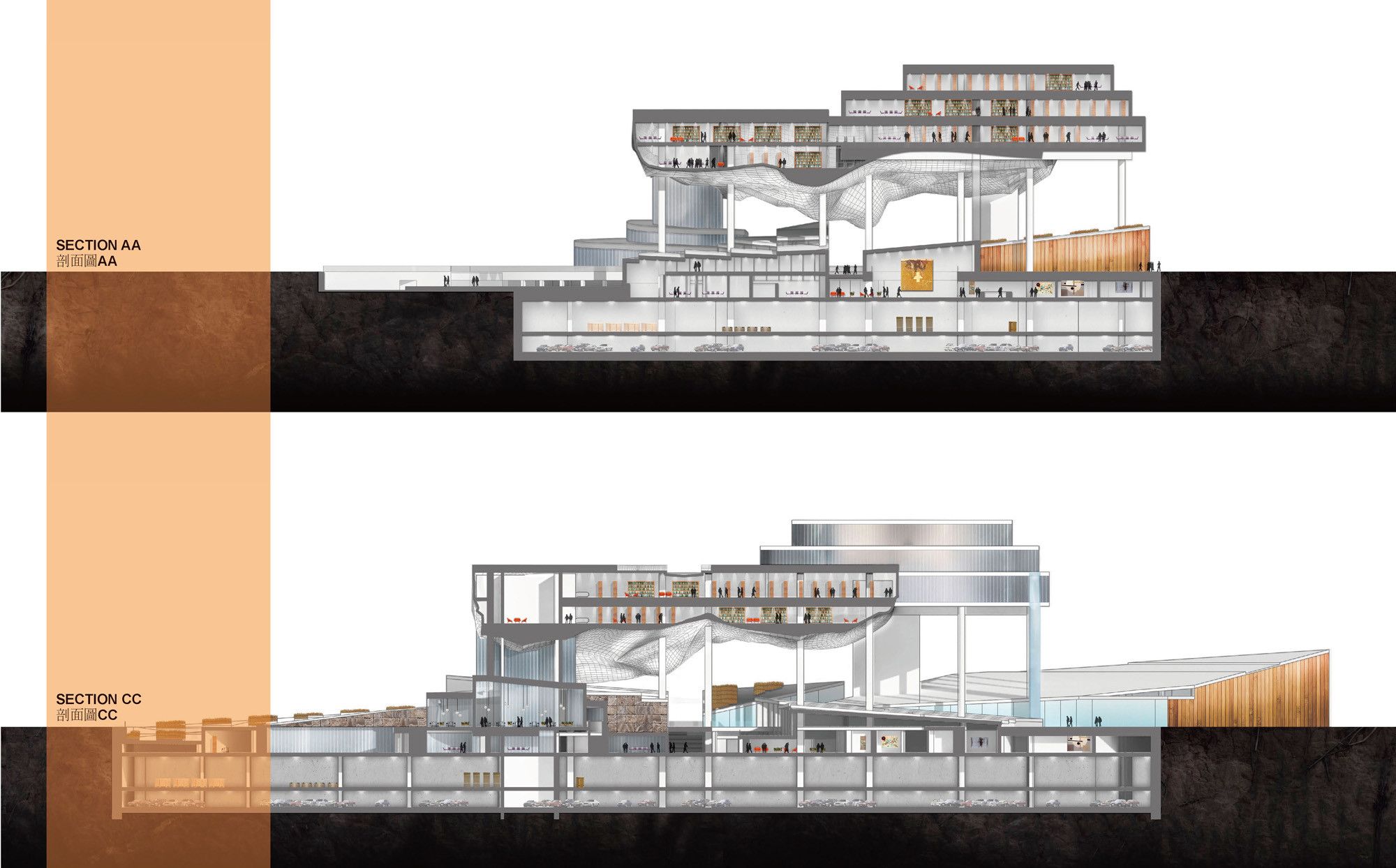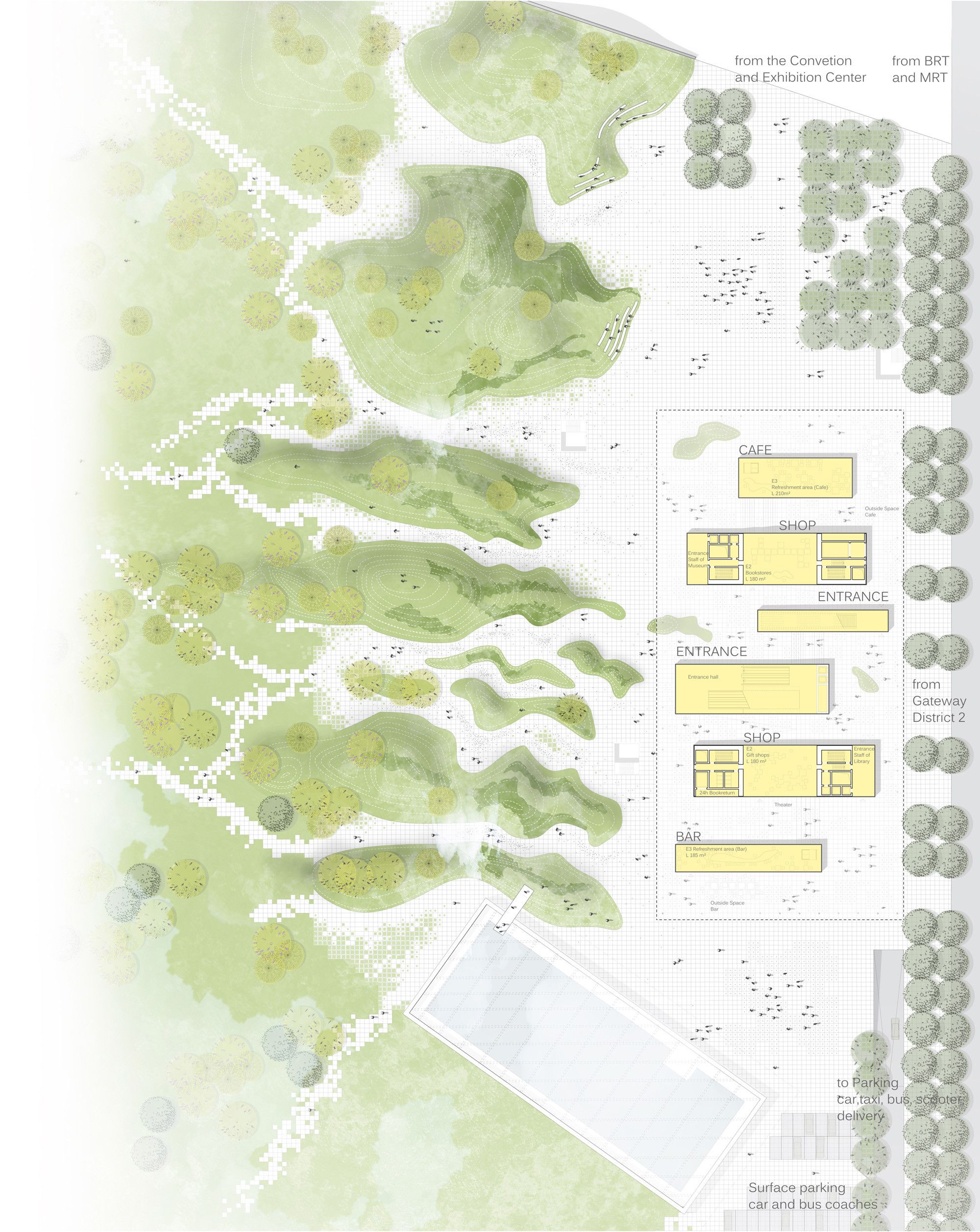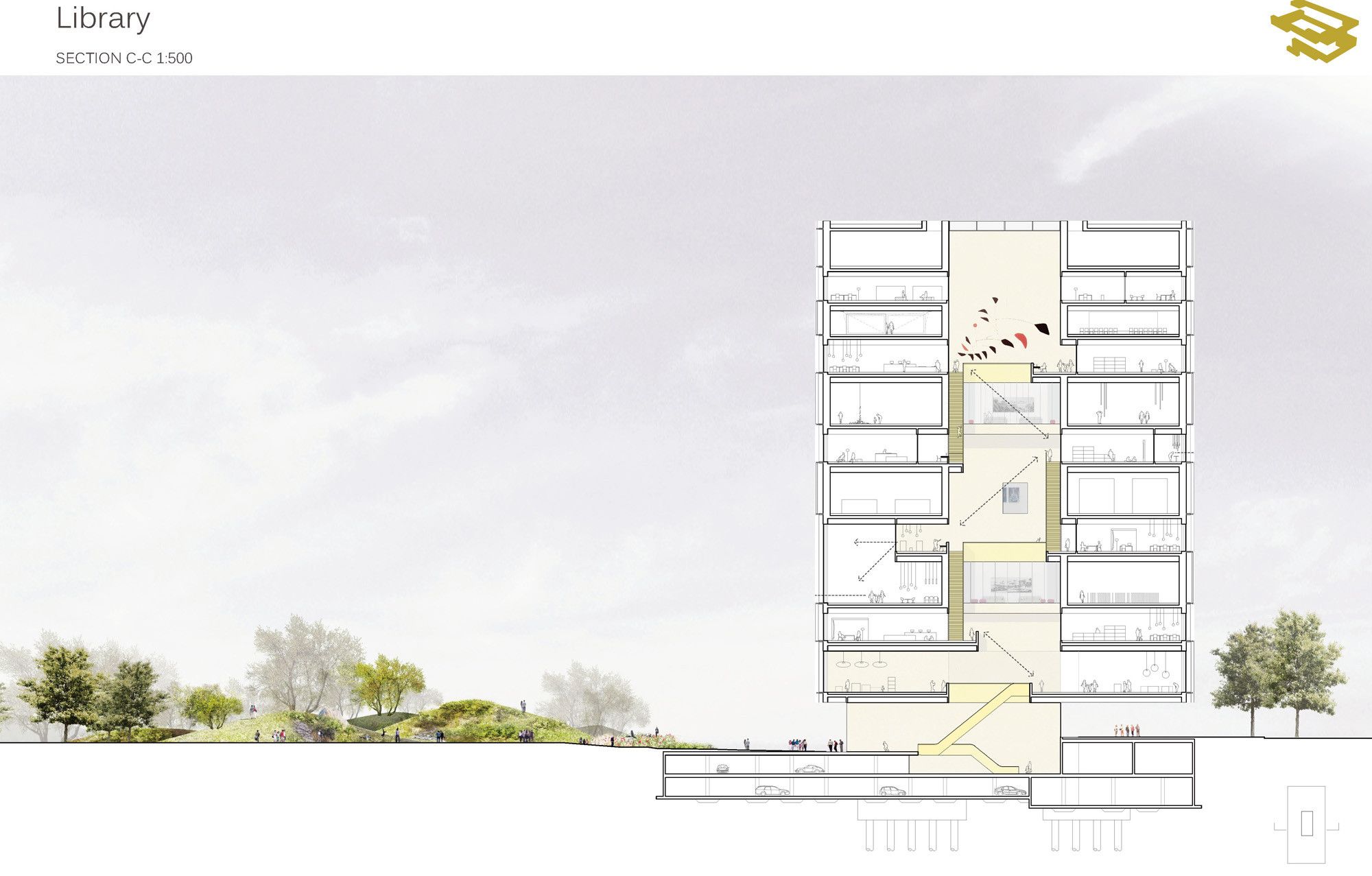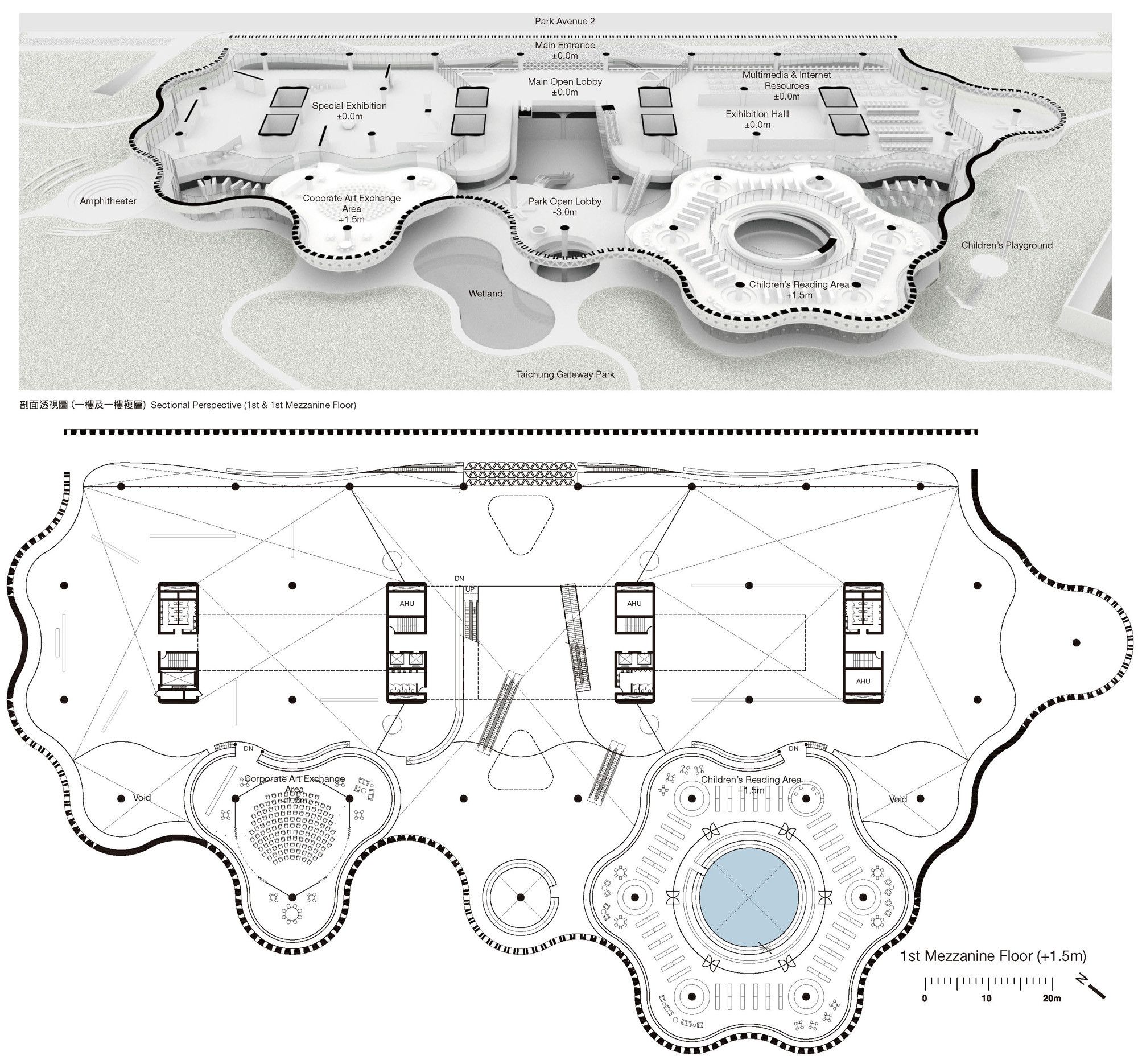US based firm Synthesis Design + Architecture, in collaboration with Arup have recently unveiled their design proposal for the Taichung Convention Center. The design proposal, named “Cultural Ascent”, is conceived as a continuous weave of architecture and landscape that blurs the boundary between architecture, public space and urban landscape, proposing a futuristic vision. The proposal merges the programs of a public library, fine arts museum, and city park into an iconic contemporary architectural landmark. The architectural intent of the building is to augment its programmatic contents by creating gradient spatial conditions through sectional movement, while utilizing variable façade patterning and articulation to register varying programmatic conditions. More details from the architect come after the jump.
The building organization is driven by two ramping and interlocking masses of gradient program (library and museum) that peel up from the landscape (park) in opposing clock-wise moves each hinging on a structural core. This move simultaneously. Below grade the two programs are unified through shared parking and administration spaces, while above grade each program operates independently, yet intersects at key moments where exchange is facilitated through shared circulation, vertical cores and a sculptural roof terrace, ultimately merging into a single articulated mass. In section the two opposing ground moves work collectively to frame a connective portal between the urban condition and the park to the south with the mass of the building floating above, while in plan those moves create a multi-story atrium condition.
Given it’s key location at the head of the Taichung Cultural Park, our proposal seeks to present an urban gateway to the park while simultaneously extending the landscaping of the park through the building and providing a legible edge to the park. The sculptural base of the building peels away from the landscape in two distinct landforms (library and museum) to sculpt a framed portal connecting the city and the park. As they ascend, the two masses fuse into a sculpted mass of interlocking volumes and cantilevering floor slabs that hover over the park to shield the sculpted ground condition from the harsh Taiwanese sun. The green landscape of the park appears to pull through the building and re-emerge as an intensive green roof and sculpted roof terrace overlooking the park and the pending Taiwan Tower.
The form and long spans of the interweaving ramps are supported by a structure of built-up box girders. Constructed of either steel or concrete and erected in segmental stages similar to infrastructure construction processes, the box girders transfer gravity loads to vertical structural elements at either end of the longitudinal axis of the building. The vertical structural elements are concrete cores originating at the foundation level and carrying up to the roof level. Additional vertical structural elements including bearing walls and columns are integrated within the architectural form. These elements reduce the gravity load demand on the cores and shorten the spans of the ramps and floor plates to limit the required depth of the box girders.
Credits:
Design team: Alvin Huang (Principal), Filipa Valente (Project Architect), Behnaz Farahi, Kevin Chen, Yueming Zhou, and Joseph Sarafian.
Client: Taichung City
Program: Public Library and Fine Arts Museum
Year: 2013
Status: Competition entry
Location: Taichung, TAIWAN
First Prize. Image Courtesy of SANAA via Taichung City Cultural Center
First Prize. Image Courtesy of SANAA via Taichung City Cultural Center
Second Prize. Image Courtesy of Jean-Loup Baldacci via Taichung City Cultural Center
Second Prize. Image Courtesy of Jean-Loup Baldacci via Taichung City Cultural Center
Second Prize. Image Courtesy of Jean-Loup Baldacci via Taichung City Cultural Center
Third Prize. Image Courtesy of Eisenman Architects via Taichung City Cultural Center
Third Prize. Image Courtesy of Eisenman Architects via Taichung City Cultural Center
Third Prize. Image Courtesy of Eisenman Architects via Taichung City Cultural Center
Honorable Mention. Image Courtesy of Stucheli Architekten AG / Mathis Tinner via Taichung City Cultural Center
Honorable Mention. Image Courtesy of MASS STUDIES / Minsuk Cho via Taichung City Cultural Center
Honorable Mention. Image Courtesy of Stucheli Architekten AG / Mathis Tinner via Taichung City Cultural Center
Honorable Mention. Image Courtesy of Stucheli Architekten AG / Mathis Tinner via Taichung City Cultural Center
Honorable Mention. Image Courtesy of MASS STUDIES / Minsuk Cho via Taichung City Cultural Center
Honorable Mention. Image Courtesy of MASS STUDIES / Minsuk Cho via Taichung City Cultural Center
First Prize. Image Courtesy of SANAA via Taichung City Cultural Center
First Prize. Image Courtesy of SANAA via Taichung City Cultural Center
Second Prize
Second Prize
Third Prize
Third Prize
courtesy of Honorable Mention
courtesy of Honorable Mention
courtesy of Honorable Mention
Courtesy of Synthesis Design + Architecture (SDA) and Arup


